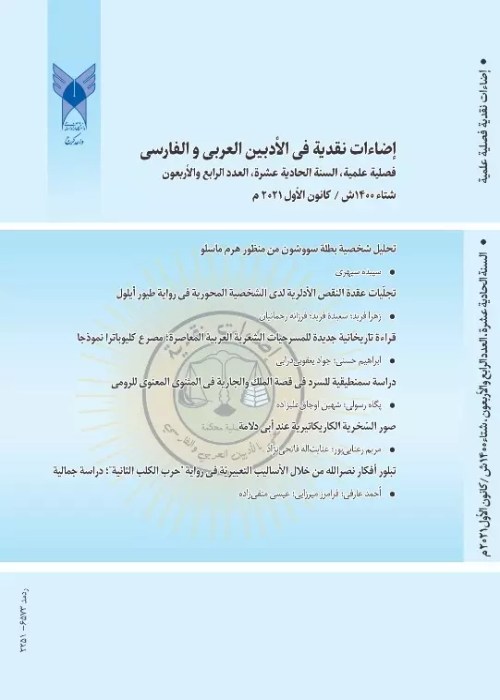Semiotics of language codes in the national poems of Badawi al-Jabal
Semiotics deals with the life of signs within social reality. The task of this knowledge is to search for meanings and hidden meanings in the sign system, whether linguistic or non-linguistic. Given that literary texts are part of linguistic and non-linguistic signs, semiotics provides researcher with more accurate reading and interpretation of the text. This research seeks to examine the linguistic codes in the national poems of Badawi al-Jabal using descriptive-analytic method and semiotics. His national poems due to having new semiotic dimensions familiarize the reader with the ideas that he wanted to convey to the reader. This study addresses the nationalistic aspects of Badawi’s poetry in the four axioms of aesthetics, semiotics of time and place, the semiotics of author and intertextuality. The symbols in Badawi’s poetry are not accidental, but are derived from his intellectual approach to life and the world. The poet, using linguistic signs, added tremendous power and influence to his poetry to deepen the audience's sense regarding these signs. In addition, it helped the reader discover the hidden aspects of the text . One of the most important results of this study is that the poet uses these signs to illustrate concepts such as love of patriotism, displacement, return to homeland and the calamities of time along with expressing emotions. By creating literary images, the poet animated his poems, released them from explicit clauses, and compelled the audience to search the text in depth.
-
Analysis of Ghassan Kenfani's al-qubba'a wa al-nabi (The Hat and The Prophet) on The Basis of Bertolt Brecht's Defamiliarization Technique
Sayed Yousef Najatnezhad *, Feisal Saiahi,
Rays of Criticism In Arabic & Persian, -
Anachronism in drama of AL Sarir from Youssef Al Ani
*, Feysal Sayahi
Studies on Arabic language and Literature,


